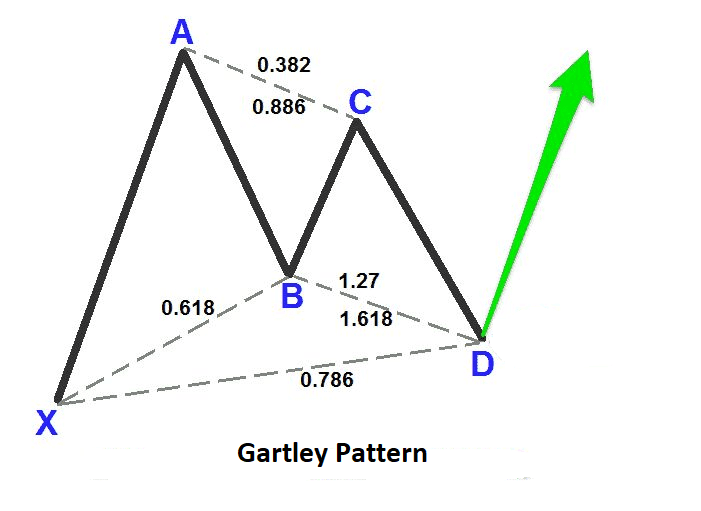Forex trading strategies for using the Gartley pattern: Techniques for trading with the Gartley pattern.
In the dynamic world of forex trading, success relies on the ability to identify and execute strategies that capitalize on market patterns. The Gartley pattern, a lesser-known yet highly effective tool, has gained traction among experienced traders due to its potential to predict price reversals with remarkable accuracy. In this article, we delve into the intricacies of the Gartley pattern and explore techniques for leveraging it to enhance your trading prowess.
Table Content
I. Understanding the Gartley Pattern
II. Trading Techniques with the Gartley Pattern
1. Identifying the Gartley Pattern
2. Confirming with Additional Indicators
3. Waiting for Confluence
4. Utilizing Multiple Time Frames
5. Risk Management and Trade Execution
6. Practice and Back testing
7. Patience and Discipline
III. Case Study: Gartley Pattern in Action
IV. Footnote
Understanding the Gartley Pattern
Named after its creator, H.M. Gartley, the Gartley pattern is a distinct harmonic pattern that provides insights into potential market reversals. It is built on the premise of Fibonacci retracement and extension levels, which are widely respected in technical analysis.

The pattern is composed of five key points:
- X to A: The pattern begins with a significant price movement known as the "X to A" leg. This initial movement could be bullish or bearish, serving as the foundation for the entire pattern.
- A to B: Following the X point, a counter-trend price movement, represented as the "A to B" leg, emerges. This leg typically retraces a portion of the initial X to A move.
- B to C: The next phase, known as the "B to C" leg, is a continuation of the counter-trend movement. This leg retraces a portion of the A to B leg, ideally to a Fibonacci retracement level.
- C to D: The "C to D" leg is where the pattern takes its definitive shape. This leg extends from the end of the B to C retracement and is expected to reach a Fibonacci extension level. This level typically corresponds to the 0.786 retracement of the X to A leg.
- D Completion Point: The pattern's completion point, labeled as "D," is the culmination of the X to A, A to B, B to C, and C to D movements. At this point, traders anticipate a price reversal.
Trading Techniques with the Gartley Pattern
1. Identifying the Gartley Pattern:
Accurate identification of the Gartley pattern is essential. To simplify the process, traders often employ pattern recognition software or charting platforms that can automatically detect harmonic patterns. These tools enhance efficiency and eliminate the chances of missing potential trading opportunities.
2. Confirming with Additional Indicators:
While the Gartley pattern itself holds substantial predictive power, traders can bolster their decisions by incorporating supplementary indicators. Oscillators like the Relative Strength Index (RSI) or the Moving Average Convergence Divergence (MACD) can provide confirmation of potential reversal points indicated by the Gartley pattern.
3. Waiting for Confluence:
Successful traders understand the value of confluence – the alignment of multiple technical factors. Waiting for the Gartley pattern to align with other forms of technical analysis, such as support and resistance levels, trendlines, or chart patterns, can significantly enhance the probability of a successful trade.
4. Utilizing Multiple Time Frames:
To gain a comprehensive view of market dynamics, it's prudent to assess the Gartley pattern across multiple time frames. Higher time frames offer a broader perspective of trend direction, while lower time frames can provide more accurate entry points. A pattern that aligns on multiple time frames carries greater significance and confidence.
5. Risk Management and Trade Execution:
Like any trading strategy, risk management remains paramount when using the Gartley pattern. Determine your risk tolerance and set appropriate stop-loss levels to protect your capital. When executing trades, consider using a portion of the position size suggested by the pattern and adding to it as the trade moves in your favor.
6. Practice and Back testing:
Becoming proficient in trading with the Gartley pattern requires practice and back testing. Study historical charts and identify past instances of the pattern. This not only helps you gain confidence in recognizing the pattern but also provides insights into how the pattern behaves in different market conditions.
7. Patience and Discipline:
Trading with the Gartley pattern demands patience and discipline. Not every potential pattern will yield profitable results. Wait for optimal setups, adhere to your trading plan, and avoid making impulsive decisions based solely on the presence of a pattern.
Case Study: Gartley Pattern in Action
To illustrate the effectiveness of the Gartley pattern, let's consider a hypothetical case study:
Imagine you're monitoring the EUR/USD currency pair on the daily chart. After a prolonged downtrend, you identify a potential bullish Gartley pattern forming. The X to A leg spans from 1.1000 to 1.0900. The subsequent A to B retracement takes the price to 1.0950. The B to C leg then retraces to 1.0920, aligning closely with the 0.618 Fibonacci retracement of the A to B leg.
The C to D extension projects to 1.0980, corresponding with the 0.786 retracement of the X to A leg. As the price approaches the D point, the RSI also shows bullish divergence, strengthening the case for a potential reversal. Additionally, the pattern's completion aligns with a major support zone identified through horizontal support and a rising trendline.
With confluence from these factors, you decide to enter a long position at 1.0980, setting a conservative stop-loss at 1.0910 to manage risk. Within the following weeks, the price indeed reverses, reaching 1.1150 – a profitable move of 170 pips.
Footnote:
The Gartley pattern presents a powerful tool for traders seeking to capitalize on market reversals. Its reliance on Fibonacci ratios, combined with supplementary indicators and confluence with other technical factors, enhances its predictive capabilities. However, it's important to acknowledge that no trading strategy guarantees success in every instance. Prudent risk management, discipline, and continuous learning remain integral to successful forex trading.
As with any trading approach, mastering the Gartley pattern demands practice, patience, and a thorough understanding of market dynamics. By incorporating this harmonic pattern into your trading arsenal and refining your skills over time, you can potentially increase your odds of achieving consistent profitability in the dynamic world of forex trading.











Discussion